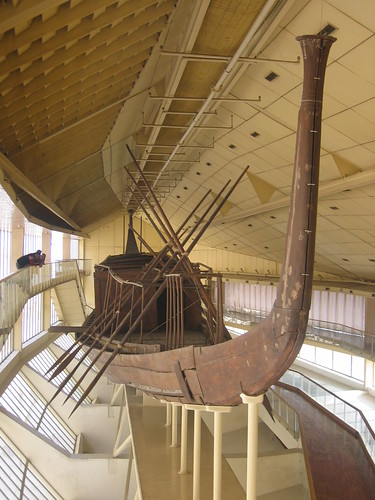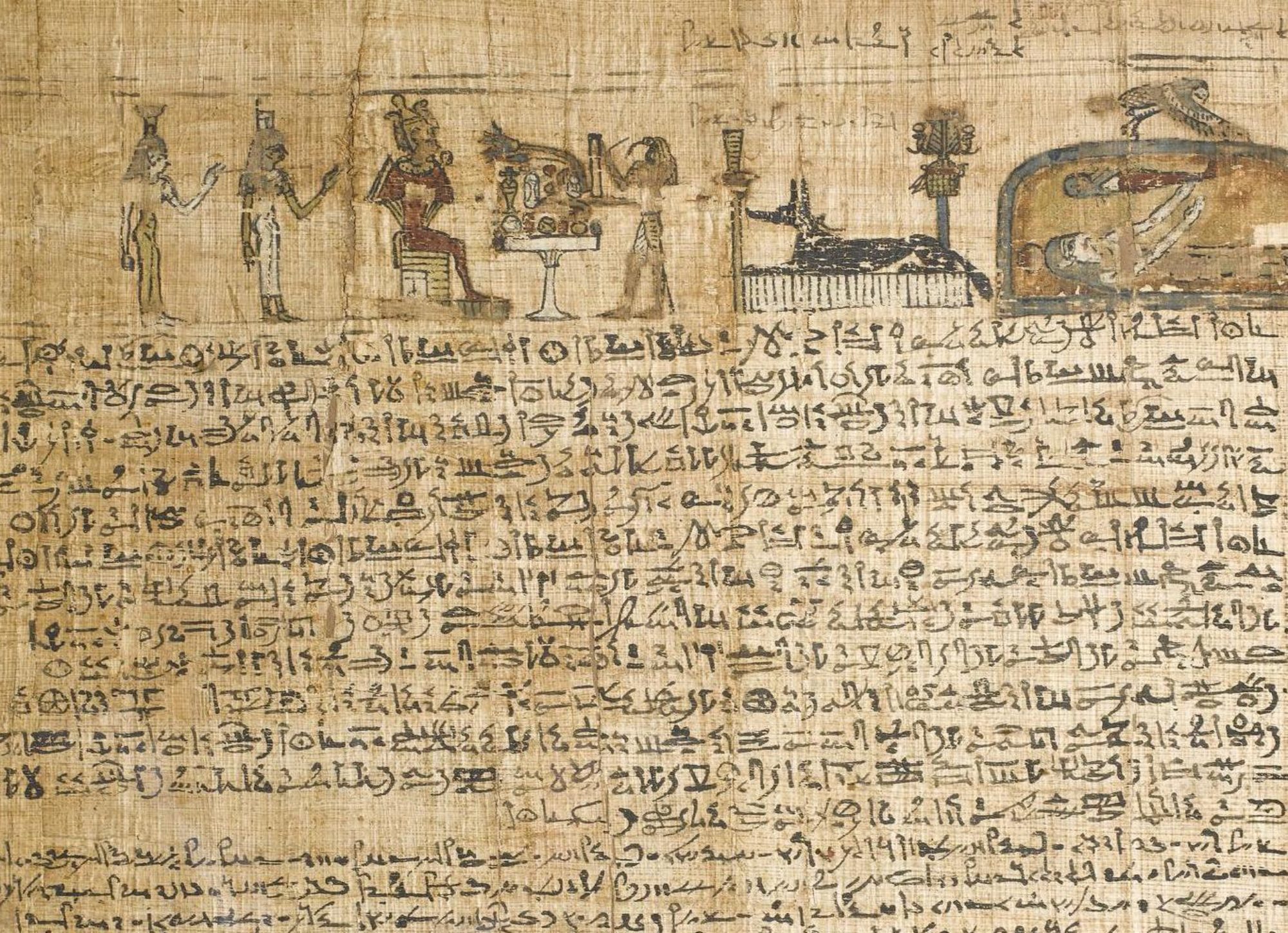
To the Egyptians, ‘travel’ was synonymous with ‘water travel’, and the Nile acted as the country’s superhighway. Since Egypt was entirely strung out along the fertile riverbanks of the life-giving Nile that served as the country’s backbone, the majority of travel and transportation was north-south oriented and much time and energy was saved by using boats. Therefore the words used to indicate north or southward movement were written with boat symbols.
The word ḫnti, a verb meaning “to sail upstream, travel southward†(definition from Faulkner’s Concise Dictionary of Middle Egyptian 1962, 195), was written like this:
beginning with the phonetic sound ‘ḫnt’—a symbol of three (or four) jars in a rack, the wavy water symbol that stands for the letter ‘n’, a loaf of bread for the letter ‘t’, and a determinative symbol to give a visual clue to the word’s meaning, in this case a hieroglyph of a boat with a raised sail.
The word ḫdi, a verb meaning “to travel downstream, northwards†(according to Faulkner 1962, 199), was written like this:

with the symbol for the letter round ‘ḫ’, a circle filled with horizontal lines, the letter ‘d’ which was written with a hand, and a determinative depicting a boat with oars.
You may have noticed that while both these words designate travel using boat determinatives they differ slightly, one being shown with oars and the other with sails. This is because the Egyptians reflected the realities of travel in how they wrote—the word for southern travel is written with a sail because the prevailing wind in Egypt comes from the north and people travelling south would always make use of the helpful wind, harnessing its energy with sails, while the word for northern travel is written with oars, since anyone going north by boat would have had to travel against the wind, but following the flow of the river downstream towards the Mediterranean, using the water current and oars to propel the boat. Beautifully logical, isn’t it?
The visual dimension of Egyptian words means that they can often give us much more information about the culture beyond a literal reading and it’s worth reading between the lines.

A full-sized boat built from cedar wood that was buried beside the Great Pyramid of Khufu, rebuilt and now on display at Giza.

Beautifully logical?
Of course: Egypt was (and is now) a rural country and in Italy we say “saggezza contadina” (rural wisdom), meaning of simple people but pagmatic.
Weren’t ancient Egyptian wise? Yes: I think, for example, to Ptahhotep.
Very nice observation about the determinatives!
Perhaps it is nice to add that, as complement to the
orientation upstream and downstream mentioned above,
the Egyptians saw the source of the Nile as the orientation
point (so not the north as we do). Hence East,
iAbty, literally means “left side”, and West,
imnty, literally means “right side”. Just picture a
man standing with his face to the south, and you will get
the picture. In line with this, the south part of the country
was seen as the ‘beginning’ of the country, as is reflected
in terms like tp-rsi (cp. tp = “at the head
of”) and xnty (cp. xnt= “what is in front”)
for the South.
Very good points Aayko- it’s a very Western concept to think of north as the top and south as the bottom. Of course the directional flow of the Nile is also why the higher ground in the south is known as Upper Egypt and the lower area where the river flows into the sea is known as Lower Egypt. Thanks for your comments!